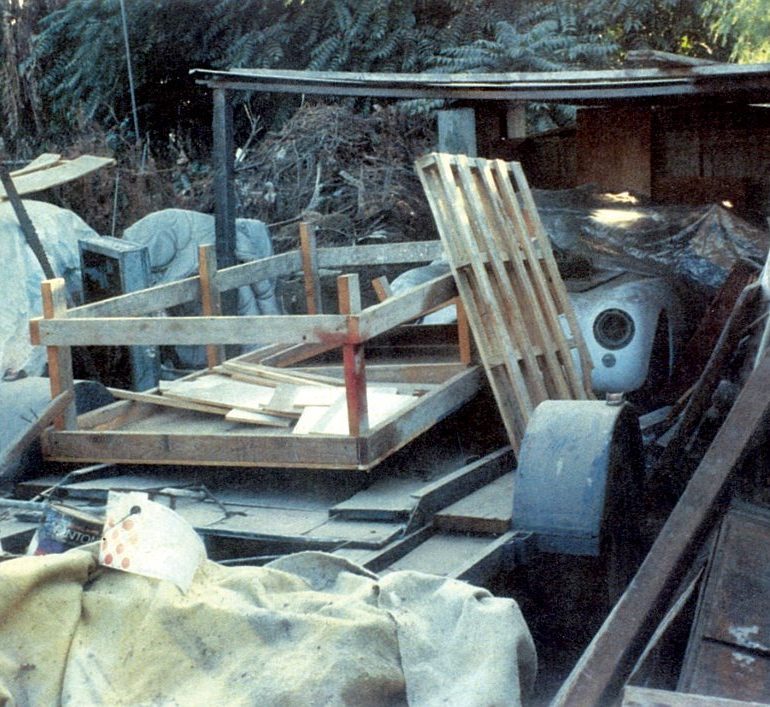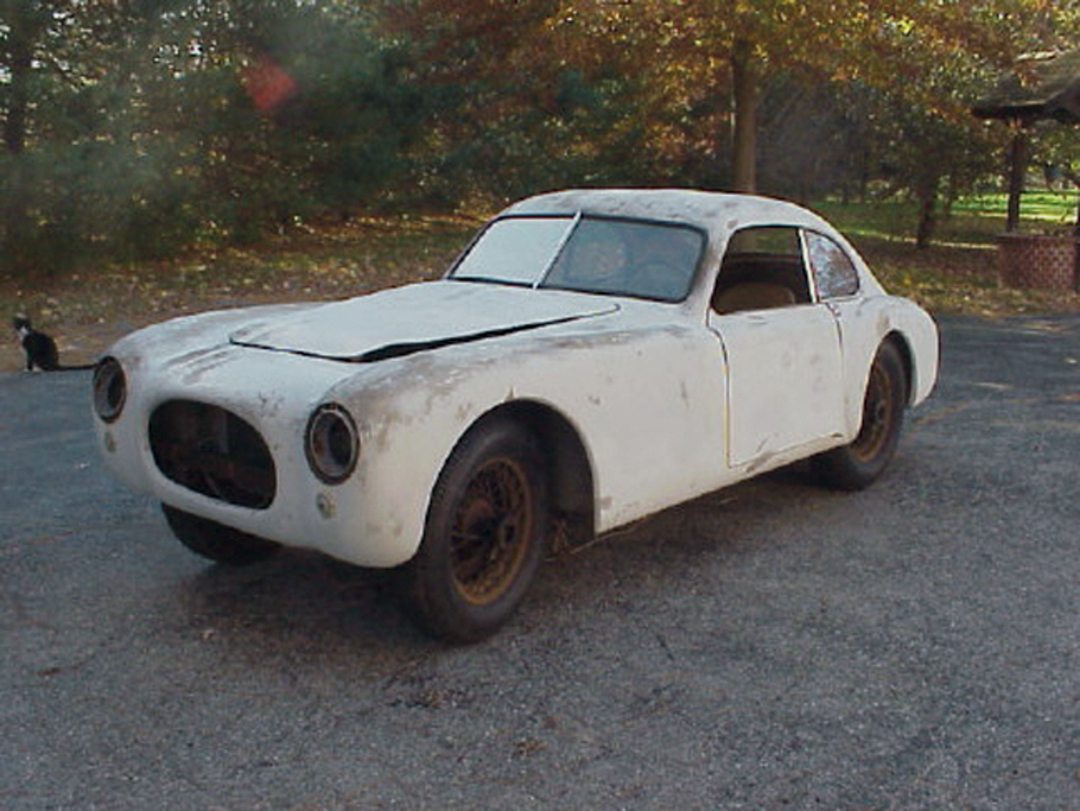What was Jud Phillips thinking? This has been the question that’s tormented Bill Fester for nearly a decade.
Fester, from Houston, Texas, is not your ordinary car collector. Although he and his wife are very much city dwellers, their domicile is not only home to a wonderful collection of four-, three-, and two-wheeled vehicles, but also to two-legged creatures in the form of Rhode Island Red Hens. Fester is Kevin Bacon-like in that he not only knows every car collector in our town, but seemingly knows everyone in our town (of Houston; our nation’s fourth most populous city). Fester is the best kind of car collector; kind, gentle, warm, enthusiastic, honest and always willing to help.
Fester’s interest in the automobile is vast and he enjoys learning about new areas of the hobby, no matter how far from center. His collection is eclectic to say the least, and includes a 1953 Studebaker “Loewy” Starlight Coupe, 1959 BMW Isetta, 1961 Renault 4CV, 1963 Fiat Multipla 600D, 1973 Austin Mini 1000, 1984 LeSharo Motorhome, 1994 ex-Brian Redman JZR, and a 2004 Aprilia SR 50 scooter. Fester regularly exercises all of his vehicles, but perhaps his most beloved possession is the one that, at the moment, will only move with a fork lift. This car is a bit of an enigma, which is totally fitting for the entire cast of characters surrounding this month’s Hidden Treasure.
The story begins in the early 1950s when famed land speed racers, Bill Burke and Mickey Thompson, along with Roy Kinch, surreptitiously pulled a mold off Robert Petersen’s Cisitalia 202 Coupe, while it was at George Barris’ shop for a repaint! Under the company they formed, Allied, it’s estimated that the team produced approximately 50 coupe bodies shaped from the then space-age material of fiberglass. Burke was so impressed by the clean lines of the body that he built a gullwing-door Allied Coupe to race at the Bonneville Salt Flats. Powered by a 284-cubic-inch Ardun-Mercury built by C.T. Automotive, Burke pushed the fiberglass coupe to an astonishing 167.91 mph, setting a class land speed record in 1954.
Burke was not the only one to land speed race an Allied Coupe. Gene Hersom raced across the vast, salty expanse in the Fifties in an Allied Coupe powered by half a Duesenberg 8-cylinder engine. Additionally, some Allied-bodied cars were road raced, such as Jack Baker’s El Toro (1). And one or more Allied Coupes rolling on a Frank Kurtis sports car chassis are claimed to have been built for the cancelled 1955 Carrera Panamericana.
Then there is Jud Phillips’ Allied Coupe; the non-running object of Fester’s curiosities and dreams. Phillips spent his life as a racing mechanic and by reputation was a world-class story teller with an infectious sense of humor. He was chief mechanic for Leader Card Racers, at the Indianapolis 500, in 1968 when team driver Bobby Unser gulped the milk. He also prepared winning cars for Don Branson, Mike Mosley, Billy Vukovich and Tom Sneva, and was the chief mechanic or builder on several national winning Sprint Car teams. It was not unusual for Phillips’ cars to compete 40 or 50 times a year; which explains why he never completed the Allied Coupe project in his garage.
Phillips began his Allied Coupe build on a mild steel tube frame with basic longitudinals and a “V”-type truss running from back to front. The construction was similar to an oval track “Big Car” with the addition of outrigger support pipes for the body structure. Front suspension was by a solid axle with standard kingpin spindles and parallel transverse torsion bars similar to an oval track machine. Rear suspension was also a solid axle with a Halibrand Quick Change center section with alloy axle keepers at the wheel flanges, parallel transverse torsion bars using a Jacob’s Ladder-type stabilizer, and uprights similar to those of a Kurtis sports car. Halibrand discs did the stopping at all four corners.
Phillips initiated construction of the car in 1954 in his limited spare time while working at Bob Estes’ car dealerships. It’s believed that sometime between 1955 and 1957 the car was towed to the back lot of Pat Flaherty’s cash register repair shop. In 1957, the Conze Brothers of the Watts neighborhood of Los Angeles took possession of Phillips’ Allied Coupe. Well known as superb machinists and world class hoarders, the brothers held onto this car until Vince Conze passed away in 2005. The car’s next custodian became Marsh Blackburn who kept it for a year or so, eventually selling it on to Greg Snyder. Around 2006, the Allied was purchased by Tim Ritter who sold it to Fester in 2007 without an engine or gearbox.
Since that time Fester has been meticulously examining the car and digging hard trying to figure out exactly what Phillips was building. Fester said, “There is no real consensus among the people I’ve spoken with regarding what Jud intended for his Allied Coupe. Both A.J. Watson and Paul Diatlovich (who worked for Jud at one time) were aware of the car and independently recalled that Jud intended to use an Offenhauser 220 engine for power. Watson told me he thought Phillips was just building himself a sports car. While I’m certainly in no position to argue with A.J. Watson, that idea just doesn’t seem right. The car has so many non-street-friendly components, such as the five-gallon gas tank, it would have been totally impractical to drive on public roadways.”
Fester continued, “Jud’s focus during the time he was building the Allied was oval track-oriented with Bob Estes. At that time there was a specific class for dirt track sports cars; maybe that’s what he was building? Estes was also a competitor at the Carrera Panamericana and perhaps that’s the direction Jud was going. Given the horrendous turning radius of the steering setup it’s entirely possible that Phillips may have wanted to build an Allied to race against Burke’s car at Bonneville. Jud’s widow Sally told me she knew nothing about the Allied Coupe, but his daughter Carol told me she recalled the car being under a tarp at her father’s shop.”
Fester intends to finish Jud Phillips’ Allied Coupe to honor the car and its wonderful constructor. The builder’s intent for this Allied Coupe has been a great conundrum for decades and Fester’s own personal brain-teaser since 2007. Fester added: “Never completed and very much a one-off, Jud’s car could have been anything. However, with the constructor being a world-class racecar mechanic and builder and with the car design being so unfriendly for the street, my strong hunch is that Phillips built this one as a pure competition machine.”





